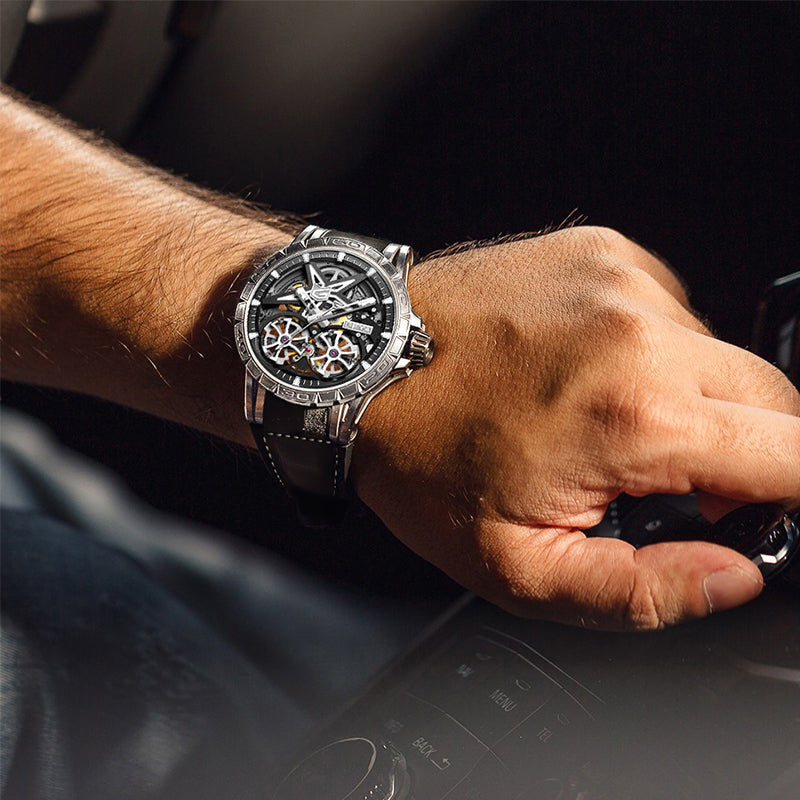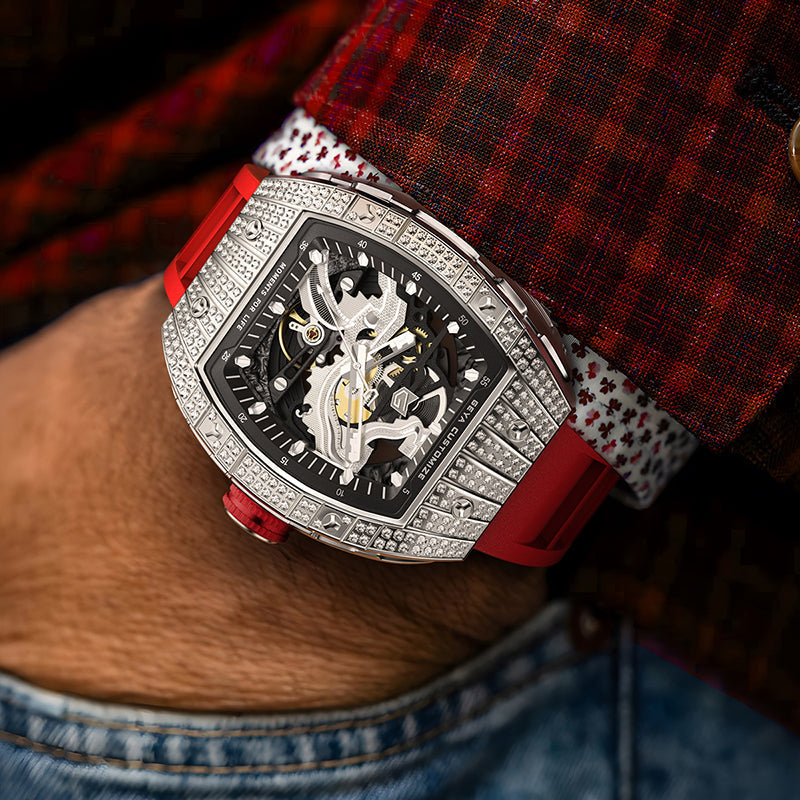In the world of watches, some minor differences between them can be significant for buyers or users. It is quite accessible to find a handy and practical watch for everyone online. There are also pretty undemanding ways to find out more about the watches you’re planning on buying. However, a comprehensive guide like this is a fast and practical way to learn more without spending hours in the research. Keep up with the reading and find out more on the basic characteristics of automatic vs manual watch.
Automatic vs Manual Watch: Similarities
Both automatic and manual watches are types of mechanical watches and therefore they do have similar working mechanisms.
Mechanical Movement
As mentioned before, both automatic and manual watch are kinds of mechanical watches which have moving parts inside the mechanisms, including springs, gears and escapements.
Battery-Less
One of the first characteristics that is mutual for both automatic vs manual watch is the fact they have no battery requirement, because they both have a way to reserve power.
Regular Maintenance
They both need regular maintenance because of their working mechanism and moving parts inside them. Every 3-5 years, the watch should be serviced in order to maintain functionality and accuracy.
Continuous Sweeping Motion
Both automatic and manual watch have continuous sweeping motion, which makes them move 6-8 times per second. This is a huge difference from i.e. quartz watches that have one tick per second.
Automatic vs Manual Watch: Differences
Winding Method and Regularity
If we compare automatic vs manual watch in terms of winding methods and regularity, we will come to the first difference between these watches. An automatic watch has a self-winding mechanism that will function as long as the watch is worn on a daily basis. In contrast, manual watches need to be wound manually by turning the crown which will keep them running.

Accuracy and Durability
The inner parts of mechanical watches can influence the watches’ durability and accuracy over time. Automatic watches have more moving parts, i.e. rotor and that makes them more prone to breaking or having higher repair costs. Also, due to the rotor movement, they might lose a few seconds a day, which makes them less accurate.
Manual watches have less moving parts, which makes them more durable and accurate. The reason behind this is that manual watches have no rotor inside them.
Appeal and Usefulness
When doing an appeal and usefulness comparison of automatic vs manual watch, we should pay attention to a few basic details which can differ between them.
Automatic watches are practical and modern watches that one might use for daily wear. They do appear bulkier and can be slightly heavy because of the mechanism inside.
Manual watches are more traditionally-appealing watches that a watch enthusiast might like to have in his collection. They are less heavy and appear less bulky than automatic watches.
Automatic vs Manual Watch: Conclusion
As a conclusion to this comprehensive guide, it is best to take one more look at all of the mentioned characteristics of automatic vs manual watch and according to that, make your own decision.
If you’re looking for a practical and functional watch that you are able to wear on a daily basis and that needs minor maintenance, an automatic watch might be an ideal choice for you.
On the other hand, if your tendencies are to have a traditional watch that you can control in a certain way, the manual watch is the one for you.
Without further ado, discover the world of Geya watches and find the luxurious craftsmanship and delicate design in one place and one watch.



